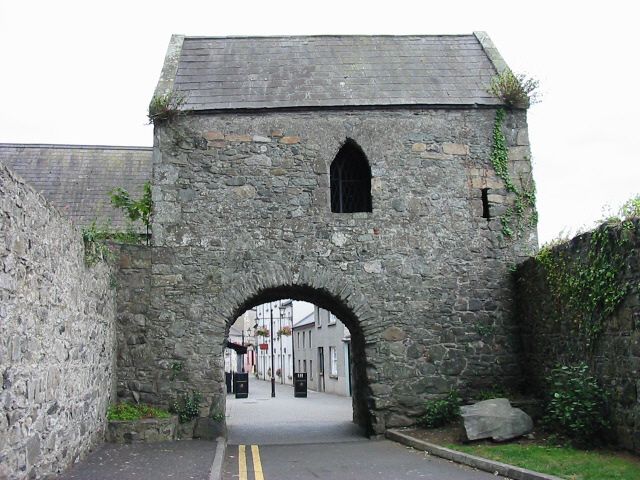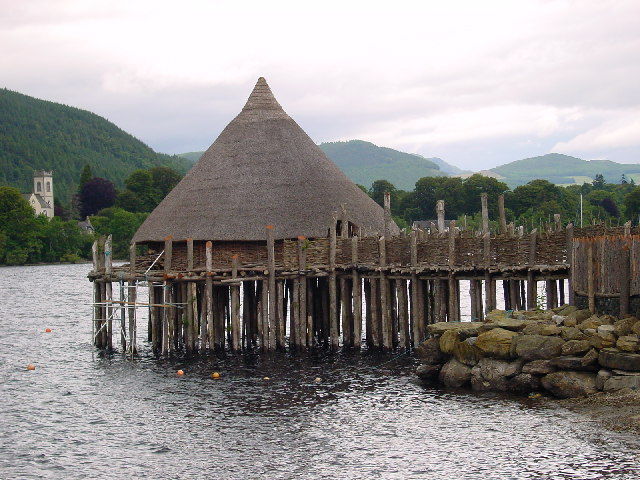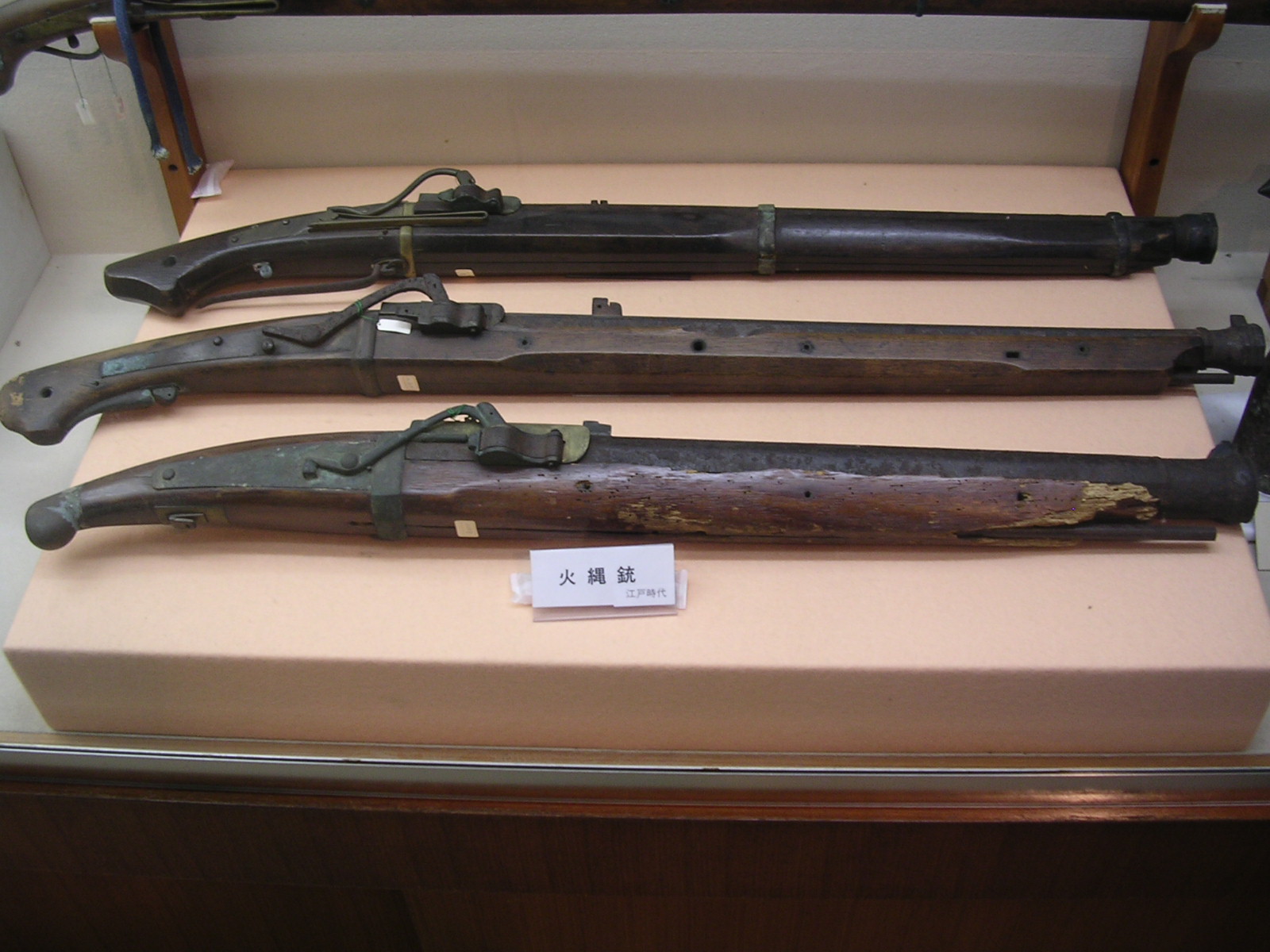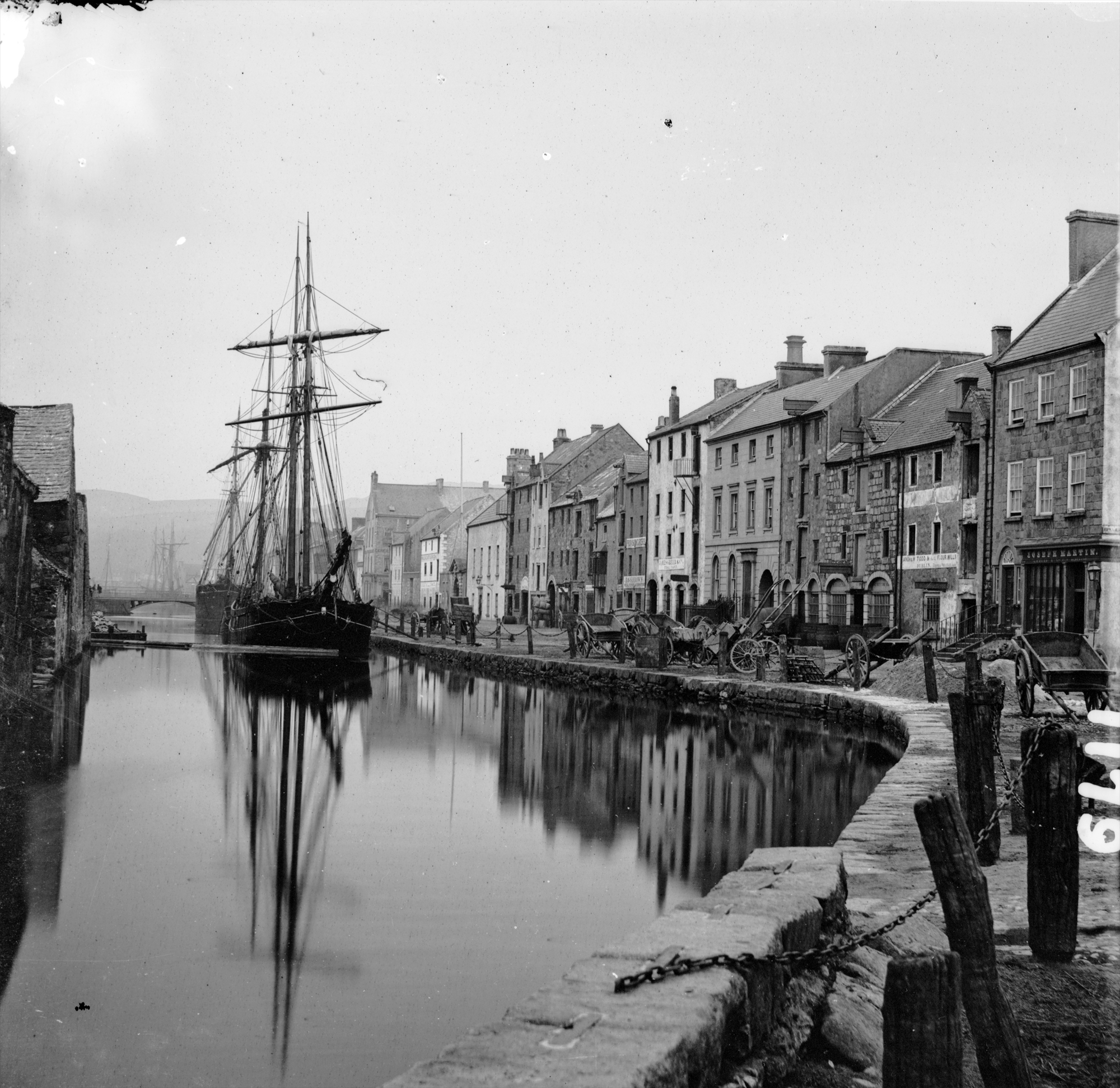|
Battle Of Moyry Pass
The Battle of Moyry Pass was fought during September and October 1600 in counties Armagh and Louth, in the north of Ireland, during the Nine Years' War. It was the first significant engagement of forces following the cessation of arms agreed in the previous year between the Irish leader Hugh O'Neill and the English Crown commander, the Earl of Essex. The battle was fought by the armies of O'Neill and Lord Mountjoy, a follower of the late Earl of Essex. Mountjoy was determined to pierce O'Neill's heartland in central and western Ulster by the Moyry Pass. In the course of a two-week assault the English troops established a garrison near Armagh, taking heavy casualties, and Mountjoy retired with difficulty to Dundalk. Campaign Mountjoy's strategy for putting down O'Neill's rebellion was gradually to constrict his territory in Ulster with a ring of fortified garrisons on the borders. To this end, he had landed seaborne forces at Derry in the north of the province and at Carri ... [...More Info...] [...Related Items...] OR: [Wikipedia] [Google] [Baidu] |
Nine Years War (Ireland)
The Nine Years' War, sometimes called Tyrone's Rebellion, took place in Ireland from 1593 to 1603. It was fought between an Irish alliance—led mainly by Hugh O'Neill of Tyrone and Hugh Roe O'Donnell of Tyrconnell—against English rule in Ireland, and was a response to the ongoing Tudor conquest of Ireland. The war was fought in all parts of the country, but mainly in the northern province of Ulster. The Irish alliance won some important early victories, such as the Battle of Clontibret (1595) and the Battle of the Yellow Ford (1598), but the English won a victory against the alliance and their Spanish allies in the siege of Kinsale (1601–02). The war ended with the Treaty of Mellifont (1603). Many of the defeated northern lords left Ireland to seek support for a new uprising in the Flight of the Earls (1607), never to return. This marked the end of Gaelic Ireland and led to the Plantation of Ulster. The war against O'Neill and his allies was the largest conflict fought ... [...More Info...] [...Related Items...] OR: [Wikipedia] [Google] [Baidu] |
Carrickfergus
Carrickfergus ( , meaning " Fergus' rock") is a large town in County Antrim, Northern Ireland. It sits on the north shore of Belfast Lough, from Belfast. The town had a population of 27,998 at the 2011 Census. It is County Antrim's oldest town and one of the oldest towns in Ireland as a whole. Carrickfergus Castle, built in the late 12th century at the behest of Anglo-Norman knight John de Courcy, was the capital of the Earldom of Ulster. After the earldom's collapse, it remained the only English outpost in Ulster for the next four centuries. Carrickfergus was the administrative centre for Carrickfergus Borough Council, before this was amalgamated into the Mid and East Antrim District Council in 2015, and forms part of the Belfast Metropolitan Area. It is also a townland of 65 acres, a civil parish and a barony. The town is the subject of the classic Irish folk song "Carrickfergus", a 19th-century translation of an Irish-language song (''Do Bhí Bean Uasal'') from Munster, ... [...More Info...] [...Related Items...] OR: [Wikipedia] [Google] [Baidu] |
Carlingford, County Louth
Carlingford (; ga, Cairlinn) is a coastal town and civil parish in northern County Louth, Ireland. For the purposes of local government, the town is part of the Dundalk Municipal District. It is situated on the southern shore of Carlingford Lough with Slieve Foy mountain as a backdrop, sometimes known as Carlingford Mountain. It is the main town on the Cooley Peninsula. Located on the R176/ R173 roads between Greenore and Omeath village, Carlingford is approximately 27 km north east (by road) from Dundalk (15.6 km directly), 90 km north of Dublin and 11 km south of the border with Northern Ireland. Carlingford won the Irish Tidy Towns Competition in 1988. Carlingford still retains its medieval layout noticeable by the narrow lanes and small streets. Tholsel Street is where the last of the medieval walled town's gates can still be seen, called "The Tholsel" which apparently was also used as a gaol, on Tholsel Street itself there is still a 16th-century To ... [...More Info...] [...Related Items...] OR: [Wikipedia] [Google] [Baidu] |
Edward Blaney
Edward Blayney, 1st Baron Blayney, also Blainey or Blaney (1570–1629) was a Welsh soldier and politician in Ireland. He became Baron Blayney of Monaghan in the Peerage of Ireland. He gave his name to the town of Castleblayney, which he founded in about 1611. Biography He was born at Gregynog Hall in Tregynon, Montgomeryshire, a younger son of David Lloyd Blayney and his wife Elizabeth Jones. He became a soldier, saw service in Spain and the Low Countries, and came to Ireland in 1598 with Robert Devereux, 2nd Earl of Essex. After Lord Mountjoy occupied Moyry Pass in 1600 and dismantled the Irish earthworks there, he marched to Mountnorris (halfway between Newry and Armagh) where he built an earthwork fort and left a garrison of 400 men under the command of Blayney, who was then a captain. In the Parliament of 1613-15 he sat in the Irish House of Commons as MP for Monaghan. He was sworn a member of the Privy Council of Ireland in 1615. In the 1620s he and his eldest son Henr ... [...More Info...] [...Related Items...] OR: [Wikipedia] [Google] [Baidu] |
Lough Lurcan
''Loch'' () is the Scottish Gaelic, Scots and Irish word for a lake or sea inlet. It is cognate with the Manx lough, Cornish logh, and one of the Welsh words for lake, llwch. In English English and Hiberno-English, the anglicised spelling lough is commonly found in place names; in Lowland Scots and Scottish English, the spelling "loch" is always used. Many loughs are connected to stories of lake-bursts, signifying their mythical origin. Sea-inlet lochs are often called sea lochs or sea loughs. Some such bodies of water could also be called firths, fjords, estuaries, straits or bays. Background This name for a body of water is Insular CelticThe current form has currency in the following languages: Scottish Gaelic, Irish, Manx, and has been borrowed into Lowland Scots, Scottish English, Irish English and Standard English. in origin and is applied to most lakes in Scotland and to many sea inlets in the west and north of Scotland. The word comes from Proto-Indo-European ... [...More Info...] [...Related Items...] OR: [Wikipedia] [Google] [Baidu] |
Crannog
A crannog (; ga, crannóg ; gd, crannag ) is typically a partially or entirely artificial island, usually built in lakes and estuarine waters of Scotland, Wales, and Ireland. Unlike the prehistoric pile dwellings around the Alps, which were built on the shores and not inundated until later, crannogs were built in the water, thus forming artificial islands. Crannogs were used as dwellings over five millennia, from the European Neolithic Period to as late as the 17th/early 18th century. In Scotland there is no convincing evidence in the archaeological record of Early and Middle Bronze Age or Norse Period use. The radiocarbon dating obtained from key sites such as Oakbank and Redcastle indicates at a 95.4 per cent confidence level that they date to the Late Bronze Age to Early Iron Age. The date ranges fall ''after'' around 800 BC and so could be considered Late Bronze Age by only the narrowest of margins. Crannogs have been variously interpreted as free-standing wooden struct ... [...More Info...] [...Related Items...] OR: [Wikipedia] [Google] [Baidu] |
Geoffrey Fenton
Sir Geoffrey Fenton (c. 1539 – 19 October 1608) was an English writer, Privy Councillor, and Principal Secretary of State in Ireland. Early literary years Geoffrey (spelt Jeffrey by Lodge) was born in 1539, the son of Henry Fenton of Sturton-le-Steeple, Nottinghamshire, England and Cicely Beaumont, daughter of Richard Beaumont of Coleorton Hall, Leicestershire, and was the brother of Edward Fenton the navigator. Geoffrey is said to have visited Spain and Italy in his youth; possibly he went to Paris in Sir Thomas Hoby's train in 1566, for he was living there in 1567, when he wrote ''Certaine tragicall discourses written oute of Frenche and Latin''. This book is a free translation of François de Belleforest's French rendering of Matteo Bandello's ''Novelle''. Until 1579 Fenton continued his literary labours, publishing ''Monophylo'' in 1572, ''Golden epistles gathered out of Guevaraes workes as other authors ...'' 1575, and various religious tracts of strong Protestant tende ... [...More Info...] [...Related Items...] OR: [Wikipedia] [Google] [Baidu] |
Matchlock
A matchlock or firelock is a historical type of firearm wherein the gunpowder is ignited by a burning piece of rope that is touched to the gunpowder by a mechanism that the musketeer activates by pulling a lever or trigger with his finger. Before the invention of the matchlock mechanism, the musketeer or an assistant had to apply the match directly to gunpowder by hand, much like a cannon. The matchlock mechanism allowed the musketeer to apply the match himself without losing his concentration. Description The classic matchlock gun held a burning slow match in a clamp at the end of a small curved lever known as the ''serpentine''. Upon the pull of a lever (or in later models a trigger) protruding from the bottom of the gun and connected to the serpentine, the clamp dropped down, lowering the smoldering match into the flash pan and igniting the priming powder. The flash from the primer traveled through the touch hole, igniting the main charge of propellant in the gun barrel. On ... [...More Info...] [...Related Items...] OR: [Wikipedia] [Google] [Baidu] |
Faughart
Faughart (also written Fochart) is an early Christian ruins and shrine site just north of Dundalk, County Louth, Ireland. As a popular site for modern pilgrimages, it was the birthplace of St. Brigid in 451 AD, and one of her relics is held in a church in nearby Kilcurry. Edward Bruce is buried in the graveyard on the hill above the shrine (). Bruce, who had taken the title King of Ireland, was defeated and killed at the Battle of Faughart in 1318. Landmarks include St. Brigid's stone and pillar, her shrine and well, and modern religious sites devoted to the saint that attract thousands of pilgrims and tourists, providing a massive boost to the local economy. Ruins include an iron-age fort, a Norman motte-castle, and a medieval church. Situated 3 km north of Dundalk and 6 km south of Forkill, and standing at the southern end of the Gap of the North/Moyry Pass, Faughart held huge strategic importance for many centuries and was the scene of many battles; one such legendary ... [...More Info...] [...Related Items...] OR: [Wikipedia] [Google] [Baidu] |
Site Of The Battle Of The Moyry Pass, 1600
Site most often refers to: * Archaeological site * Campsite, a place used for overnight stay in an outdoor area * Construction site * Location, a point or an area on the Earth's surface or elsewhere * Website, a set of related web pages, typically with a common domain name It may also refer to: * Site, a National Register of Historic Places property type * SITE (originally known as ''Sculpture in the Environment''), an American architecture and design firm * Site (mathematics), a category C together with a Grothendieck topology on C * ''The Site'', a 1990s TV series that aired on MSNBC * SITE Intelligence Group, a for-profit organization tracking jihadist and white supremacist organizations * SITE Institute, a terrorism-tracking organization, precursor to the SITE Intelligence Group * Sindh Industrial and Trading Estate, a company in Sindh, Pakistan * SITE Centers, American commercial real estate company * SITE Town, a densely populated town in Karachi, Pakistan * S.I.T.E Indust ... [...More Info...] [...Related Items...] OR: [Wikipedia] [Google] [Baidu] |
Newry
Newry (; ) is a city in Northern Ireland, divided by the Clanrye river in counties Armagh and Down, from Belfast and from Dublin. It had a population of 26,967 in 2011. Newry was founded in 1144 alongside a Cistercian monastery, although there are references to earlier settlements in the area, and is one of Ireland's oldest towns. The city is an entry to the " Gap of the North", from the border with the Republic of Ireland. It grew as a market town and a garrison and became a port in 1742 when it was linked to Lough Neagh by the first summit-level canal built in Ireland or Great Britain. A cathedral city, it is the episcopal seat of the Roman Catholic Diocese of Dromore. In 2002, as part of Queen Elizabeth's Golden Jubilee celebrations, Newry was granted city status along with Lisburn. Name The name Newry is an anglicization of ''An Iúraigh'', an oblique form of ''An Iúrach'', which means "the grove of yew trees". The modern Irish name for Newry is ''An tIúr'' ( ... [...More Info...] [...Related Items...] OR: [Wikipedia] [Google] [Baidu] |







